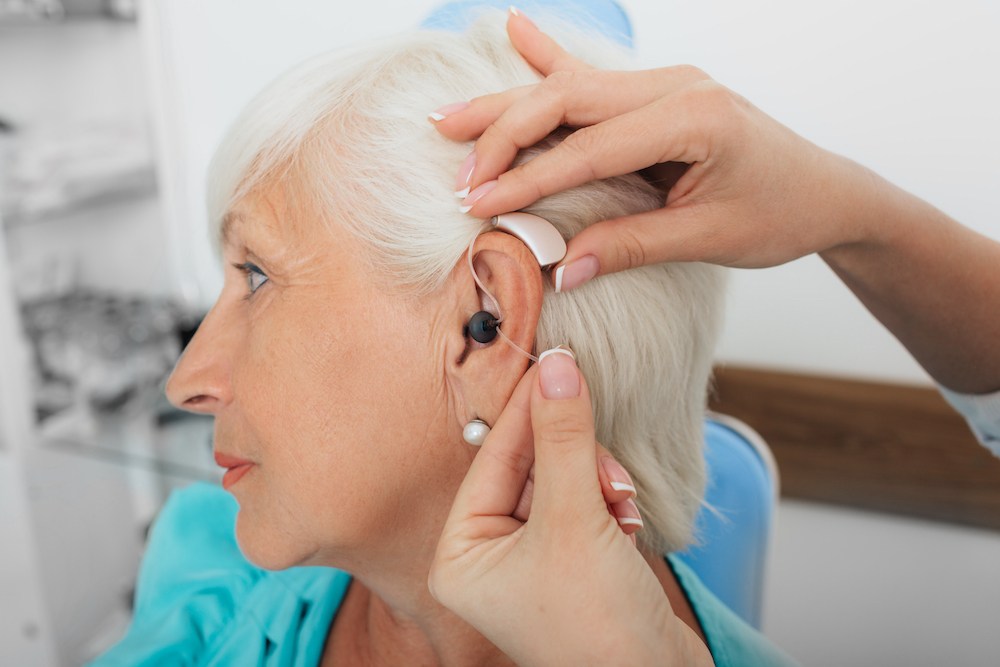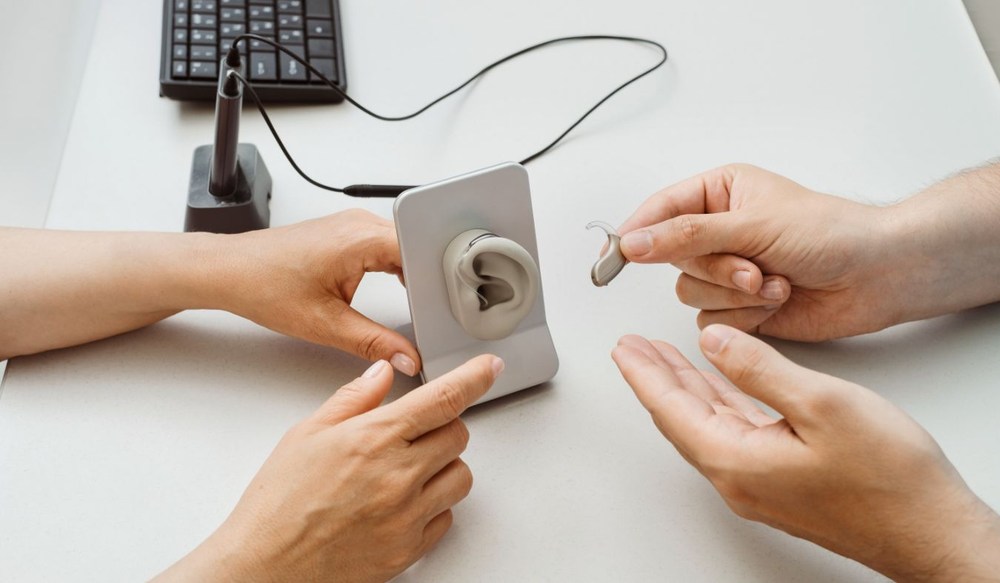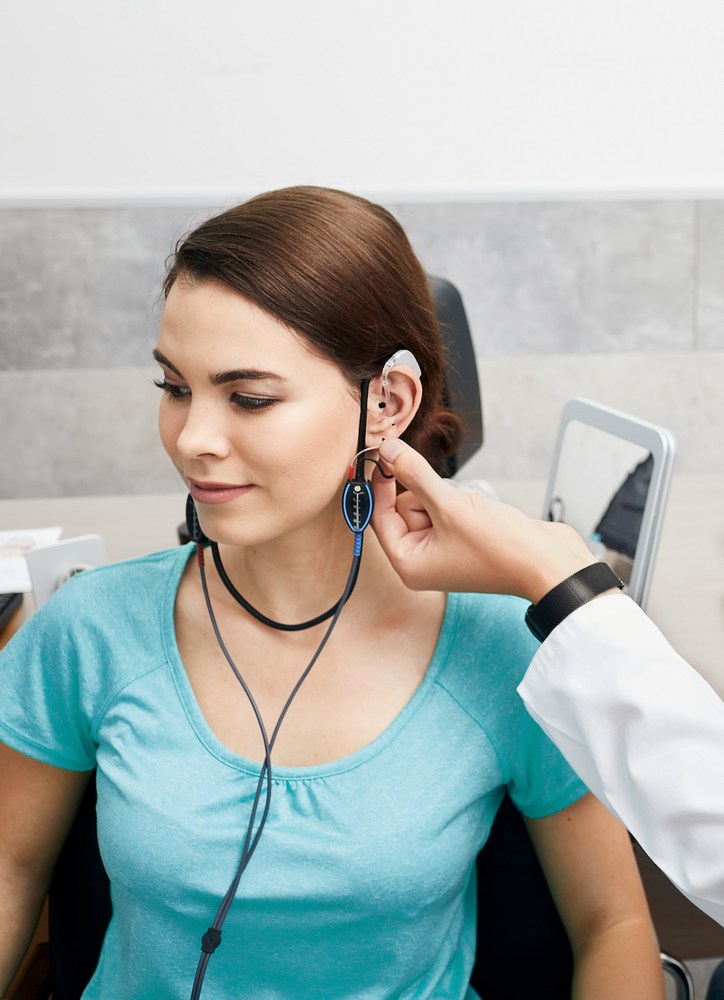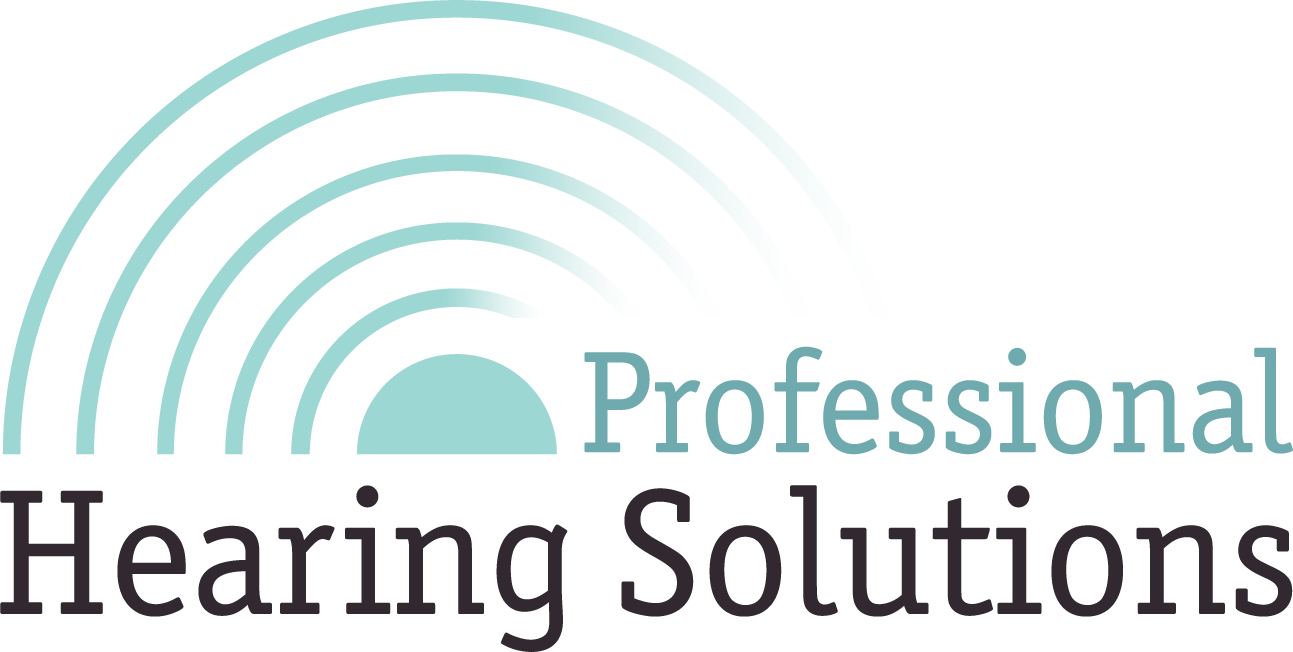The Impact of Hearing Aid Design on Wearer Comfort
The design of a hearing aid affects more than just how it looks. It
We Are Proud to be a VA Provider! SCHEDULE TODAY

By: admin | July 29, 2025
Nothing beats summer’s outdoor possibilities. Whether you’re planning a weekend camping trip, joining friends for a day at the water park or simply spending more time outside during your lunch breaks, warmer months naturally pull us outdoors. Unfortunately, all that extra outdoor time comes with a challenge if you wear hearing aids. Humidity from morning jogs, unexpected afternoon thunderstorms and activities near water can all put your devices at risk. The last thing you want is to worry about repairs when you should be enjoying yourself.
Many people with hearing aids find themselves avoiding certain summer activities or constantly stressing about moisture damage. You might hesitate to join that weekend kayaking trip or feel anxious about getting caught in a sudden downpour during an outdoor event. But protecting your hearing aids doesn’t have to mean missing out on summer fun. With the right strategies, you can participate in almost any activity while keeping your devices safe and functional throughout the season.
Hearing aids rely on carefully designed electronic components to pick up sounds, amplify them and deliver them clearly to your ear. Inside each device, microphones, receivers and tiny processing chips work together to reduce background noise and improve speech understanding. When everything is functioning properly, you can follow conversations more easily and feel more confident in different listening environments.
Moisture can easily get inside hearing aids and interfere with their performance. Water, sweat and even high humidity may cause muffled sound, shorten battery life or stop your device from working altogether. To help avoid these issues, always dry your hands before handling your hearing aids, use a drying kit overnight and remove your devices before swimming or showering.
When moisture reaches these sensitive parts, it can lead to corrosion, short-circuits and blocked openings that distort or reduce sound quality. Even small amounts of moisture that build up over time can create subtle problems like crackling noises or lower volume that might go unnoticed at first. Recognizing how vulnerable hearing aids are to moisture helps us understand why daily care and awareness are so important for keeping them working reliably.
Water activities increase the risk of moisture entering your hearing aids. Pools, lakes and heavy rain can allow water to seep into small openings, which may result in problems with sound or power. Removing your hearing aids before swimming or participating in water sports is a simple way to prevent this. After spending time near water, check your devices for any signs of moisture and use a drying kit if needed to help maintain their performance.
It is also important to consider other sources of moisture that might not seem as obvious. Sweat from exercise or spending time outdoors on a hot day can slowly collect around your hearing aids and work its way inside, especially during long periods of wear. Humidity in the air, particularly in warm or coastal climates, can create a constant low-level risk by encouraging moisture buildup in tiny openings and electronic components over time.
Even activities like gardening with a hose, playing with sprinklers or getting caught in light drizzle can introduce enough water to cause issues if you are not careful. Being aware of these less obvious sources of moisture can help you protect your hearing aids more effectively. Staying mindful of your environment and checking your devices regularly can make a big difference in preventing problems and keeping your hearing aids working the way you need them to.
Recognizing early signs of moisture damage can help you prevent more serious problems. You might notice static, muffled sounds or no sound at all if water has entered your device. It can be frustrating when your hearing aids do not work as expected, but paying attention to these changes and acting quickly helps protect your hearing health.
Other warning signs can include unexpected shut-offs or your hearing aids turning on and off randomly throughout the day. Batteries may drain faster than usual if moisture has reached the internal contacts, and you might see corrosion or residue in the battery compartment itself. Sound quality can change gradually, so it is worth noticing if voices seem less clear or if you hear crackling that was not there before.
These problems can show up after clear water exposure like swimming or getting caught in heavy rain, but even less obvious sources can cause trouble. Sweat from an intense workout, spending hours outside on humid days or sudden temperature changes that cause condensation can all introduce moisture over time. Even something like quickly rinsing your face without removing your hearing aids can allow water to seep in. Keeping an eye out for these early signs means you can address the problem before it leads to permanent damage or the need for repairs.
When exploring hearing aids for water activities, you may come across the terms “water resistant” and “waterproof.” Water resistant devices can handle small amounts of moisture, like sweat or light rain, but should not be worn while swimming or showering. This level of protection is generally enough for daily situations like being caught in a brief drizzle or working up a sweat on a warm day. Many people find water resistant models work well for active lifestyles as long as they take care to avoid direct water exposure.
Waterproof hearing aids are designed to work even if they are fully submerged for a short period. These models often come with specific IP ratings that describe how deep they can go and for how long. Some waterproof hearing aids may allow you to swim in a pool or take part in other water sports without needing to remove them, making them appealing for people who spend significant time in or around water. They can be especially helpful for children or athletes who want peace of mind during swimming lessons, kayaking or even playing at the beach.
Despite their advantages, even waterproof devices have limits. They are not usually meant for deep diving, prolonged submersion or repeated exposure to harsh conditions like saltwater without proper rinsing and care. Manufacturer guidelines vary, so it is important to review specific ratings and instructions before assuming a device is safe for every type of water activity.
Choosing the right accessories can make a big difference in how well your hearing aids hold up in everyday conditions, especially when you spend time near water or in humid environments. A reliable protective case is one of the most important tools you can have. Look for one that seals tightly and is water resistant to help protect your devices from unexpected splashes, rain or even dust and sand if you are at the beach or on a boat. Keeping your hearing aids safely stored when you are not wearing them reduces the chances of accidents that can lead to moisture damage.
If sweat is a frequent concern during exercise, gardening or warm weather activities, consider moisture-resistant sleeves or covers for your hearing aids. These small accessories add a layer of protection by helping to keep sweat from seeping into delicate parts of the device. They are especially helpful for anyone with an active lifestyle who wants to avoid constantly removing and reinserting hearing aids throughout the day. Even on hot and humid days, these covers can help you feel more confident about wearing your devices longer without worrying about moisture buildup.
Another helpful tool is a hearing aid dehumidifier or drying box. Using one regularly, especially overnight, can remove any moisture that has built up during the day. Some drying kits use gentle heat, while others rely on special desiccant materials to draw out water. These devices are excellent for maintaining the internal components of your hearing aids and preventing corrosion over time.
If your hearing aids get wet by accident, acting quickly can help limit any damage and improve the chances of restoring normal function. The first step is to remove the devices from your ears immediately to prevent further moisture exposure. If your hearing aids have an on/off switch, turn them off right away to avoid any electrical shorts or internal damage.
Next, carefully remove the batteries or open the battery compartments to allow air to circulate inside the device. This step is crucial because it helps moisture evaporate more quickly and reduces the risk of corrosion on the battery contacts or internal components. Be gentle when handling your hearing aids during this process to avoid causing any additional harm.
Once the batteries are out and the compartments are open, use a soft, dry cloth to gently wipe down the exterior of the devices. Avoid using heat sources like hair dryers or direct sunlight, as excessive heat can also damage delicate electronics. Finally, place your hearing aids in a drying kit or dehumidifier as soon as possible. These specialized tools are designed to safely draw out any trapped moisture from inside the devices, protecting sensitive parts and helping to restore your hearing aids to full performance. Acting quickly and following these steps can make a significant difference in preventing long-term damage.
Cleaning your hearing aids after any moisture exposure is essential to prevent long-term problems like rust, corrosion or blocked microphones that can reduce sound quality. Even small amounts of water, sweat or humidity left on the surface or inside the device can lead to buildup that affects performance over time. Making cleaning a regular part of your routine, especially after activities that involve water or heavy sweating, helps protect your investment and keeps your hearing aids functioning at their best.
Start by removing the batteries or opening the battery doors to allow air to circulate and help dry out any trapped moisture. Then, use a soft, dry cloth to gently wipe away any water or residue from the outside of your devices. Avoid using harsh chemicals or abrasive materials, as these can damage delicate parts. Paying attention to the small details during cleaning, like checking the microphone openings for any debris or moisture, can prevent problems before they develop.
Incorporating daily cleaning into your routine supports the longevity and reliability of your hearing aids. It reduces the chance of moisture-related damage and keeps sound clear, helping you stay connected in all kinds of environments. Taking these simple steps after moisture exposure not only protects your devices but also gives you peace of mind knowing you are doing everything possible to maintain your hearing health.
Summer offers plenty of opportunities to enjoy the outdoors, but moisture from humidity, rain and water activities can create real challenges for hearing aid users. Understanding how moisture affects your devices and taking simple steps to protect them can help prevent damage and avoid unexpected repairs. With the right knowledge and care, you can keep your hearing aids working properly while still making the most of the season.
If you need guidance on protecting your hearing aids or want to discuss options that suit your lifestyle, reach out to Professional Hearing Solutions in Port Orange, FL at (386) 478-7345. Our team is ready to provide practical advice and support to help you navigate summer without worrying about your hearing devices.
Tags: hearing aid repair, hearing aid styles, hearing aids for children

The design of a hearing aid affects more than just how it looks. It
By: admin | October 20, 2025

Nothing beats summer’s outdoor possibilities. Whether you’re
By: admin | July 29, 2025

Hearing tests have come a long way from the basic “raise your hand
By: admin | June 20, 2025
